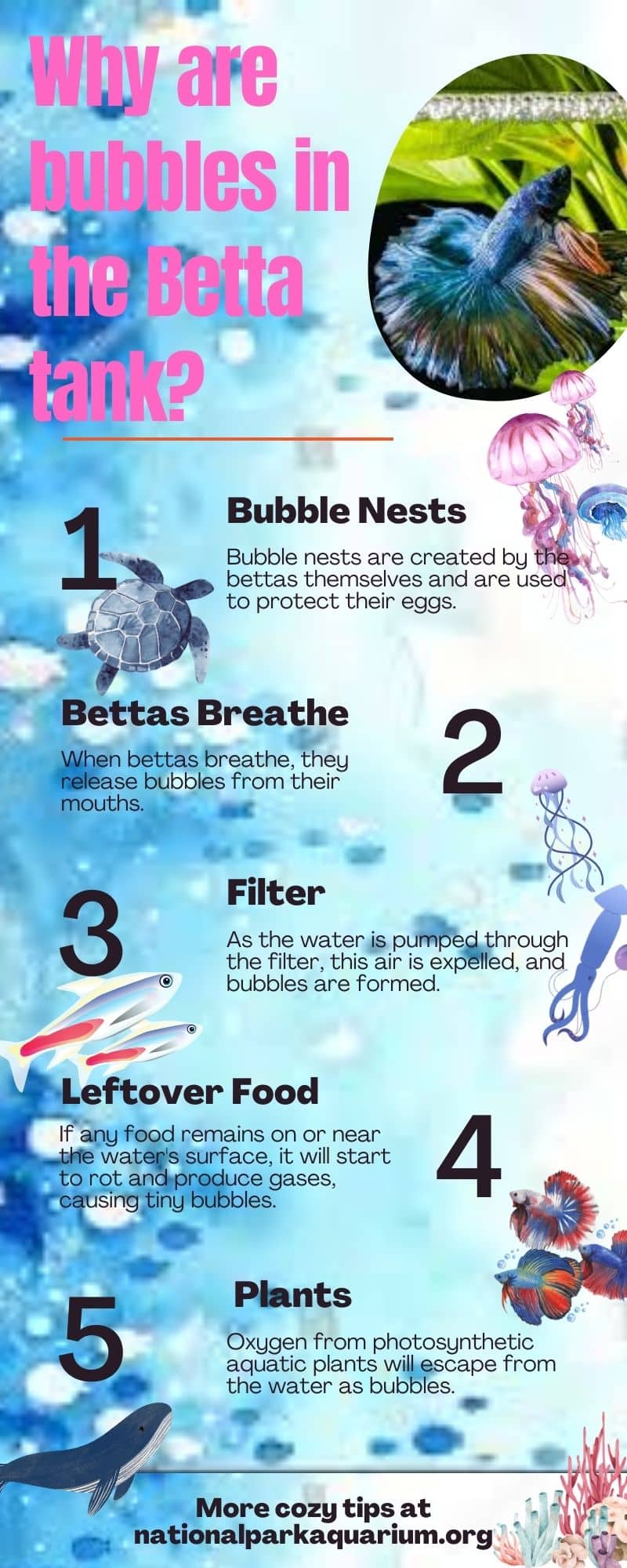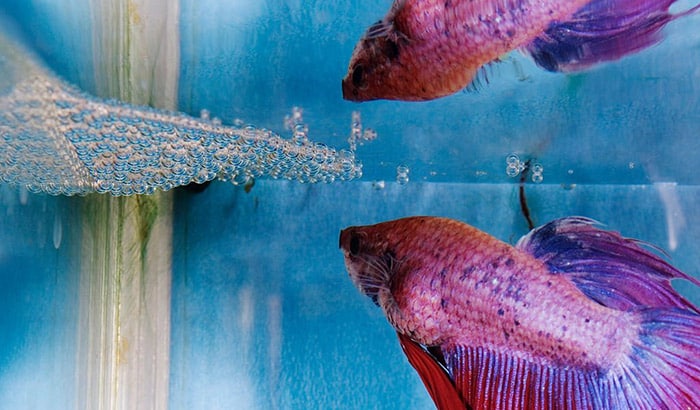Betta fish are known for their gorgeous, vibrant colors and bubbly personalities. If you’ve ever owned a betta fish, you may have noticed that it makes bubbles sometimes.
But many people don’t know that there can be a lot of bubbles in a betta nest, and sometimes these aren’t just from the fish themselves.
In this article, we’ll take a closer look at why bubbles in betta tank and what you can do to reduce or prevent them.
What Are The Bubbles in Betta Tank?

1. Bubble Nests
Bubble nests are another common source of bubbles in betta tanks. Bubble nests are created by the bettas themselves and are used to protect their eggs.
When a male betta is ready to mate, he will build a bubble nest out of saliva and air.
Once the nest is complete, the female will lay her eggs inside. The male will then fertilize the eggs, and the bubble nest will help to keep them safe until they hatch.
After the fry has hatched, the bubble nest will gradually dissolve, and the bubbles will be released into the water.
2. Bettas breathe
Bubbles in a betta fish tank can come from several sources. The most common source is the betta fish themselves. When bettas breathe, they release bubbles from their mouths.
These bubbles rise to the water’s surface and pop, leaving a small amount of air behind. Over time, these bubbles can accumulate and form a layer of foam on the water’s surface.
3. Bubbles Can Also Come From The Filter
Most filters have a small air intake that allows air to be drawn into the filter. As the water is pumped through the filter, this air is expelled, and bubbles are formed. These bubbles can then rise to the surface of the water and accumulate over time.
4. Bubbles Can Also Come From Leftover Food
Another factor that contributes to the formation of bubbles in betta tanks is usually the result of a lack of care.
If any food remains on or near the surface of the water, it will start to rot and produce gases. These gases can cause tiny bubbles to form on the surface and rise to the top.
5. Plants Make Bubbles in Betta Tanks
As the aquarium plants photosynthesize, they release oxygen into the water. This oxygen then escapes from the water in the form of bubbles. These bubbles can rise to the surface and accumulate over time.
How To Prevent Bubbles in Betta Tanks?

Suppose your betta tank has been experiencing an excessive amount of bubble formation. In that case, there are a couple of things that you can do to reduce them.
- The first thing you should try is changing out some of the water in your tank to mix it with fresh, clean water. This will help eliminate any trapped air and prevent new bubbles from forming in the tank.
- Ensure the fish fully consume all food before removing the excess from the tank.
- You’ll also want to ensure that any dead leaves, plants, or other objects are cleared regularly, so they don’t cause excess gas buildup.
- You can also try to reduce the number of bubbles put into your tank by choosing a pump with a stronger intake filter. This will help to prevent air from being pulled into the filter and causing bubbles to form.
- You should also be sure to leave at least an inch of surface space on top of the water so that any existing bubbles have room to rise and pop without sticking around.
- You can also try adding an air stone to the bottom of the tank to help reduce bubble formation and promote increased oxygenation throughout the water.
These small stones use air pumps to create a stream of microbubbles at their base, which will rise through the tank and break free on the water’s surface. The added motion and oxygenation can help prevent foam buildup and keep your tank clean and clear.
If you’ve tried these methods and are still experiencing bubbles in your betta tank, it may be time to invest in a floating plant, such as anchors or java moss. These plants produce oxygen during photosynthesis, which helps balance out the amount of gas in the water and reduce bubble formation over time.
Conclusion
While it’s normal for a small number of bubbles to form in a betta fish tank, too many bubbles can signify something is wrong. If you see an excessive number of bubbles in your tank, take a closer look at the water conditions and make changes as needed.
It’s important to take some time to investigate and determine the root of the problem to take corrective action and ensure your betta fish stay healthy and happy. With proper care, your betta fish will thrive, and you’ll enjoy watching them bubble away!




